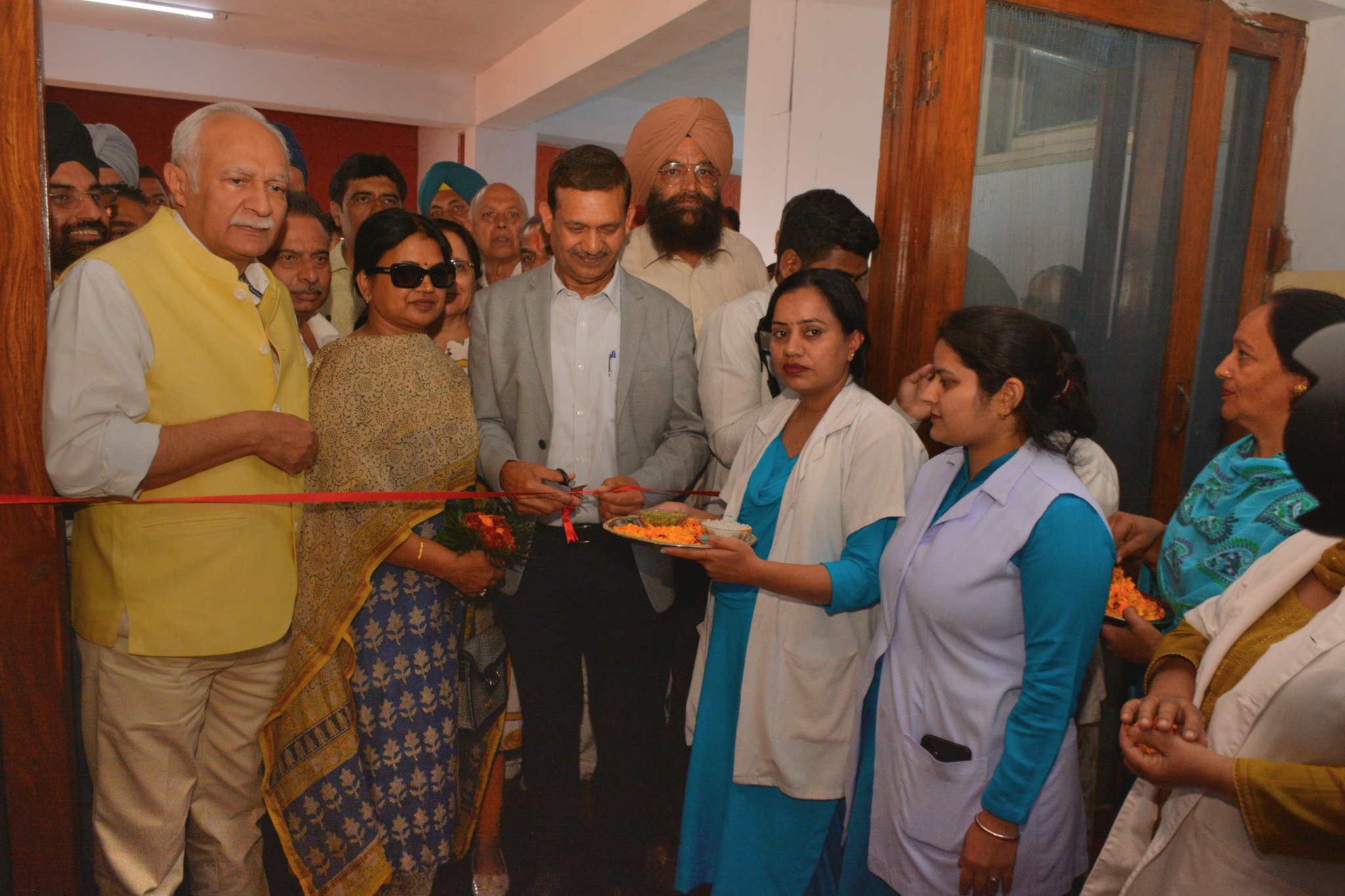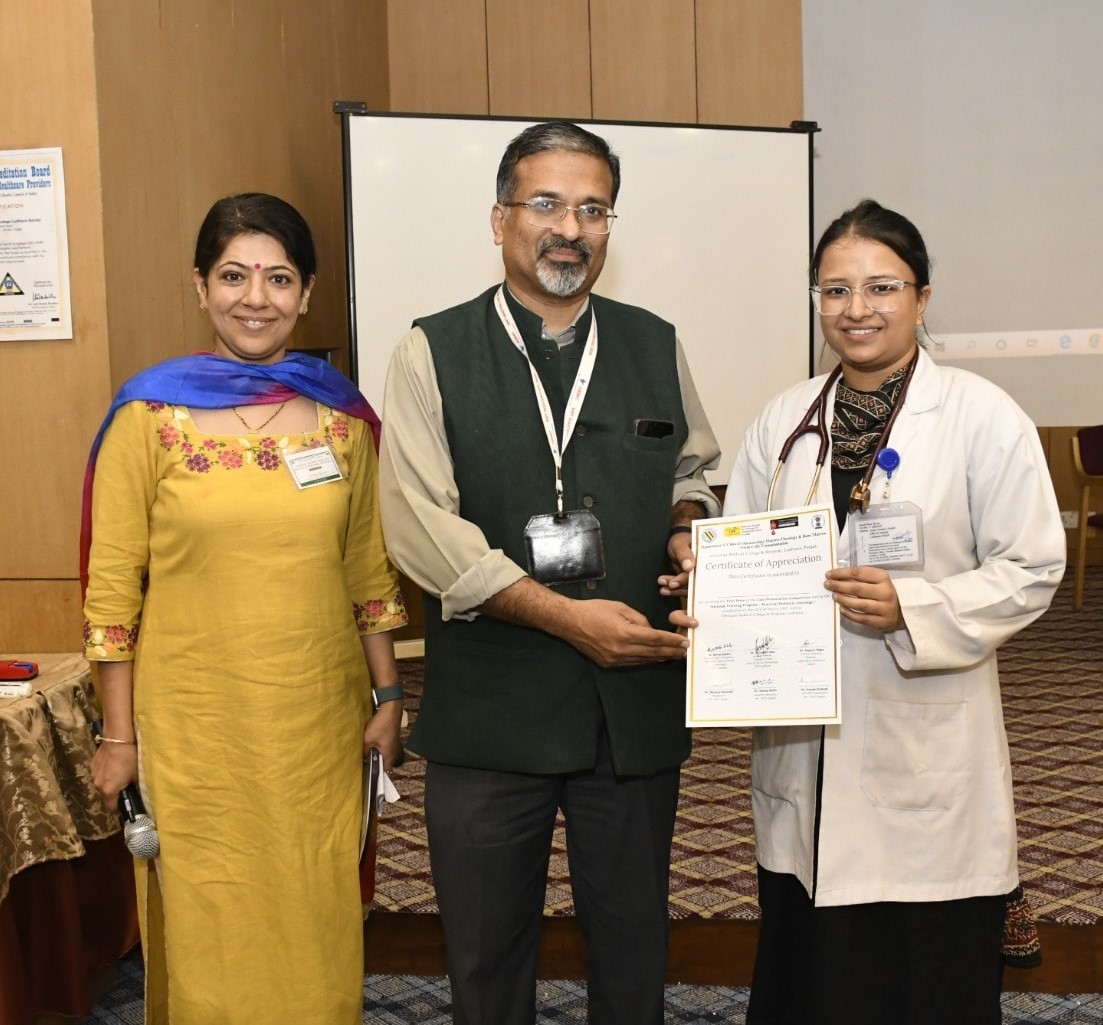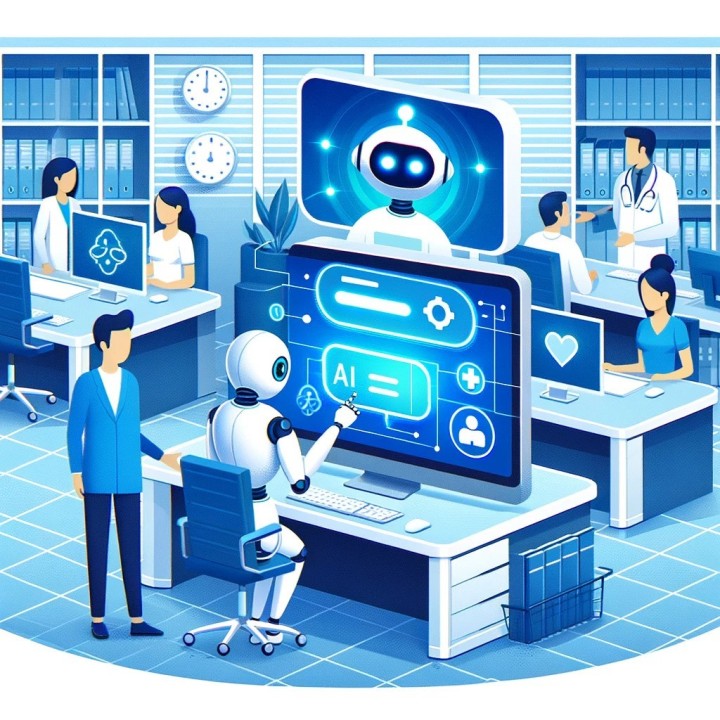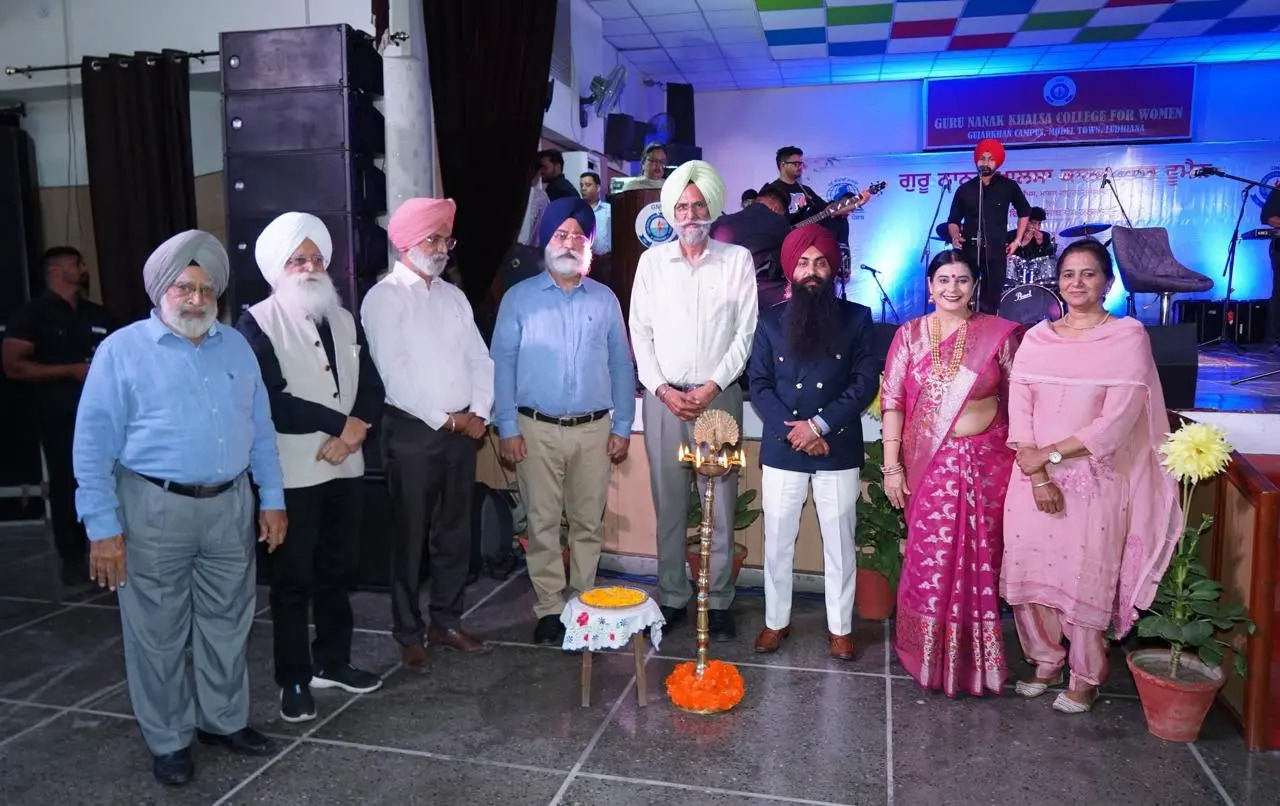WORLD HEART RHYTHM AWARENESS WEEK : ELIMINATE PREVENTABLE DEATHS – ITS POSSIBLE TO KILL YOUR ARRHYTHMIA BEFORE IT KILLS YOU.
Ludhiana (Punjabi Hedline) CMC&H, Ludhiana’s Senior Consultant Cardiologist Dr. Rohit Walia said Sudden cardiac arrest is number one killer in the world. With the latest advances in treatment of disorders leading to sudden cardiac death or other heart rhythm disorders it is possible to prevent these deaths. We release this article for public education on eve of World cardiopulmonary resuscitation and automated external defibrillation awareness week which is being celebrated from June 1 -7 and world heart rhythm awareness week which is being celebrated from June 7 to June 13 , 2023. It aims to raise awareness about arrhythmia ( abnormal heart rhythm & risk) among general public & medical professionals.
What is arrhythmia ?
Arrhythmia is a fault in heart’s electrical system which affects your heart’s pumping rhythm.
The heart has its own electric system. Electric impulses are essential to make your heart beat to pump blood to your entire body. Your heart has four chambers two on the right & two on the left. It has two upper chambers (atrial) & two lower chambers ( ventricles). In a healthy heart regular electrical signals causes these four chambers to contract & relax in a steady rhythm of 60-100 beats per minute.
Instead of beating at a normal rate some rhythm abnormalities can cause the heart to abruptly race at rates that exceed normal capacity ( Figure 1) .

Figure 1a: Normal conduction system of heart consist of pacemaker cells which initiate heart beat and conduction wires to take electricity to different regions of heart & degenerative conduction system disease can result in block in conduction at different levels or pacemaker abnormality can result in decrease in generation of adequate heart rhythm

Figure 1b: Abnormal firing from different regions of heart causing arrhythmia. Normally these areas do not fire in normal heart.
What is the risk ?
Heart rhythm disorders are leading cause of sudden cardiac death (death of apparently normal person suddenly within 24 hours) , stroke or brain attack , heart failure due to arrhythmias.
Ventricular (lower chamber of heart) rhythm problems are leading cause of sudden cardiac arrest (SCA). SCA is the leading cause of death worldwide. In India because of lack of awareness and free availability of public defibrillator devices more than 90% of Indians who experience sustained ventricular fibrillation face certain death.
Atrial fibrillation ( AF) is the most common arrhythmia. One in four people will develop it over lifetime. Every 15 seconds someone suffers an AF-related stroke. AF is also related to heart failure, sudden death, cardiovascular morbidity and vascular dementia. Life after a stroke with disabilities can be worse than death causing huge financial and emotional burden to families affected and country as a whole.
Heart failure due to arrhythmia is a reversible condition and can be reversed fully once arrhythmic focus or circuits are killed by catheter ablation.
But , with latest advances in treatment of these heart rhythm disorders it is possible to prevent & cure these disorders. The key message is we need to ELIMINATE PREVENTABLE DEATHS & ITS POSSIBLE TO KILL YOUR ARRHYTHMIA BEFORE IT KILLS YOU.
What the patient feels during arrhythmia?
Common symptoms include shortness of breath , weakness , dizziness , light headedness , fainting or feeling faint , a racing heart or palpitation & chest pain or discomfort.
In a healthy heart you don’t feel your heart beat . That’s why if you feel your heart beating too fast too slow or irregularly you should see your doctor

Figure 2: NO FAINT OR BLACKOUT SHOULD BE TAKEN CASUALLY
WHAT IS SUDDEN CARDIAC ARREST ?
For a layman sudden cardiac arrest (SCA) is a sudden, unexpected failure of heart function occurring due to fast fluttering or sudden cessation of action of the ventricles, which does not allow enough blood to be pumped out to the organs, which include the brain and the heart itself.
Medically it is defined as non-traumatic, unexpected fatal event occurring within 1 hour of the onset of symptoms in an apparently healthy subject. If death is not witnessed; the definition applies when the victim was in good health 24 hours before the event.
TO SUMMARIZE: It is unexpected death of otherwise apparently healthy person within hours. THIS IS A MEDICAL EMERGENCY
The heart’s electrical activity becomes disordered. When this happens, the heart’s lower (pumping) chambers contract in a rapid, unsynchronized way- “fibrillate” rather than beat. The heart pumps little or no blood. Collapse and sudden cardiac arrest follows.
SCA is fatal if not treated immediately by prompt and appropriate emergency care which involves administration of cardiopulmonary resuscitation (CPR), shock treatment to the chest to reset the heart’s rhythm (defibrillation) and advanced life support.
WHY THIS HAPPENS
This occurs due to sudden appearance of three possible rhythms in heart
1-Ventricular fibrillation
2-Ventricular tachycardia
3-Asystole
WHAT IS VENTRICULAR FIBRILLATION ?
Ventricular Fibrillation (VF), the abnormal heart rhythm that most often leads to sudden cardiac arrest, is treatable. If the heart can be shocked quickly with a defibrillator, a normal heart rhythm may be restored. An automated external defibrillator (AED) is a portable device used to administer an electric shock to the heart and restore the heart’s normal rhythm during sudden cardiac arrest.
What is window period of revival ?
LOST TIME IS NEVER FOUND AGAIN
It is essential that defibrillation be administered immediately following the cardiac arrest. If the heart does not return to a regular rhythm within 5-7 minutes, this fibrillation could be fatal. If defibrillated within the first minute of collapse, the victim’s chances for survival are close to 90 percent. For every minute that defibrillation is delayed, survival decreases by 7 percent to 10 percent. If it is delayed by more than 10 minutes, the chance of survival in adults is less than 5 percent.

Figure 3 : Chances of survival decrease every minute by 10 % CPR & AED therapy is delayed and after 10 minutes nearly no one survives. LEARN CPR SAVE LIFE
WHAT IS THE WINDOW PERIOD FOR REVIVAL ?
Sudden cardiac arrest is reversible but the window period to revive is extremely short. Reviving a victim with sudden cardiac arrest is like snatching life from jaws of death. After a cardiac arrest there are four to six minutes before brain death occur. Chances of survival reduce by 7-10 % with every passing minute.
In India because of lack of awareness and immediate and adequate medical intervention at present more than 90% of Indians who experience sustained ventricular fibrillation face certain death.
WHAT IS VENTRICULAR TACHYCARDIA?
Is a type of fast heartbeat that arises from abnormal electrical activity in the lower chambers or ventricles of the heart. This rhythm is more organized as compared to ventricular fibrillation but may turn into ventricular fibrillation or itself lead to hemodynamic instability and cardiac arrest. It is found initially in about 7 % of people with cardiac arrest.
In diseased-scarred hearts and weak hearts with poor pumping capacity, patients with coronary artery disease or certain electrical problems of heart are associated with increased risk of ventricular tachycardia.
This is an emergency and immediate defibrillation is needed in most of cases.
WHAT IS ASYSTOLE?
Asystole is a state of no electrical activity from the heart and therefore no blood is pumped. On ECG you will see a flat line. It is found in about 28 % of people in cardiac arrest. Out of hospital survival rates are poorest in asystole and less than 2 %.
TO SUM UP FOR SUDDEN CARDIAC ARREST: ACT JUST NOW OR ELSE IT WOULD BE TOO LATE
Immediately advanced cardiopulmonary resuscitation and defibrillation will be required for SCA victims. Delay means death. Survival rates in advanced economies with trained general public and access to automated defibrillators is around 7 % .In India because of lack of presently situation is very gloomy. After recovery your electrophysiologist will investigate to find out the cause.
Automated External Defibrillators
Automated External Defibrillators (AEDs) are devices that are used to deliver the shocks to correct ventricular fibrillation. During ventricular fibrillation there is no effective pumping function of heart leading to lack of blood supply and oxygen to brain, heart itself and other organs. This device can save lives if made available within 4 to 7 minutes of the onset of ventricular fibrillation as untreated ventricular fibrillation leads to death within minutes.

Figure 4 : Automated external defibrillator use to convert ventricular fibrillation to normal rhythm
HOW IT WORKS
An AED consists of a small computer (microprocessor), electrical circuitry, and adhesive electrode pads. The electrodes collect information about the heart’s rhythm and the microprocessor interprets the rhythm. If the heart is in ventricular fibrillation, the microprocessor recommends a defibrillating shock. The shock is delivered by way of the electrode pads, through the victim’s chest wall, and into the heart. The shock stuns the heart momentarily, stopping all activity. This gives the heart a chance to restart normal electrical activity and resume beating effectively.
NOT MUCH TRAINING REQUIRED
These machines have voice prompts to easily assist a novice at successfully using the device. It is important for bystanders who witness the collapse of an SCA victim to act quickly.
AED IS EXTREMELY SAFE
If a person does not need the shock of an AED, the machine will not deliver a shock. It is not possible to hurt someone with an AED; they can only be used to save someone’s life.
Electrophysiology study and Ventricular tachycardia ablation : finding the abnormal electric tissue and circuits causing these problems and destroying them. It is a minimally invasive procedure like angioplasty.
Implantable cardiac defibrillator(ICD) : A pacemaker like device which monitors for occurrence of ventricular tachycardia / ventricular fibrillation and tries to correct it by overdrive pacing or giving electric shocks.

Figure 5 : Implantable cardiac defibrillator consists of a battery placed under skin and a lead placed inside heart for sensing the arrhythmia and providing shock & pacing as required.
Family history of Sudden cardiac arrest : 50% of cardiac arrests occur in individuals without a known heart disease, but most suffer from concealed ischemic heart disease or genetic diseases, which could be diagnosed easily by proper awareness and medical screening. Get yourself and family screened by an electrophysiologist . There are certain genetic diseases which runs in families and may put you also on risk of sudden death. But do not worry there are treatment and devices to prevent it and let you live a fearless quality life.
Atrial Fibrillation (AF) is the most common cardiac arrhythmia. It is typically characterized by chaotic, disorganized electrical activity in the upper chambers of the heart. When AF occurs, the upper chambers of the heart (atria) quiver rapidly and irregularly (fibrillate).
It results from abnormal electrical activity in the atria, the top chambers of the heart, and causing them to contract randomly and often very fast, resulting in the heart muscle not being able to relax properly between beats. This reduces the heart’s efficiency and performance, and may lead to rapid, irregular palpitations, breathlessness, chest pain, light-headedness and fatigue. Some people with AF are asymptomatic and may only be diagnosed when they are having investigations for other reasons or have developed a complication such as a stroke.
It is typically a progressive condition with one in five progressing from paroxysmal (intermittent) to persistent (constant) atrial fibrillation within one year. The symptoms of atrial fibrillation can have a devastating impact on those affected with up to 47% of patients experiencing a reduction in their overall quality of life .
Symptoms can be palpitations (awareness of one’s heart beat) difficulty in breathing, fatigue, weakness, dizziness, or chest pain while exercising, dizziness, light headedness or precipitation of heart failure , sometimes stroke may be the first presentation
occurs when the blood supply to part of the brain is cut off. Urgent treatment is essential because the sooner
a person receives treatment for a stroke, the less damage is likely to happen. They can be caused by a blocked blood vessel supplying the brain with oxygen (ischaemic stroke) or by bleeding within or around the brain (haemorrhagic stroke).
Atrial fibrillation generally leads to ischemic stroke .

Figure 6 : STOP ATRIAL FIBRILLATION TO STOP STROKE : Stroke can lead to permanent disability and it is important to treat atrial fibrillation to prevent this.
How can a patient screen himself for any heart rhythm abnormality if symptomatic ?
TAKE THE PULSE CHALLENGE : Pulse checks helps to pick up undetected heart rhythm disorders. The simple check takes about 30 seconds but could save your life

Figure 7 : Simple knowledge of how to see pulse which is an extension of your heart beating can help diagnose arrhythmia. A normal pulse has a regular rhythm, rate of 60 -100 beats per minute. Skipping, racing or low rate need to consult your electrophysiologist.
YOU CAN USE APPLE WATCH OR SMARTPHONE BASED GADGETS TO RECORD YOUR ECG & SEND IT TO YOUR ELECTROPHYSIOLOGIST IN CASE OF SYMPTOMS

Can a patient be cured of arrhythmias without need to take any medicine or implant a device ?
SMASH THE ARRHYTMIA FOCI & CIRCUITS AND GET CURED
Electrophysiology Study & Catheter Ablation of Arrhythmia targets and kills the circuits or initiating focus in heart and a cure is possible for most arrhythmias.
ATRIAL FIBRILLATION ABLATION
Catheter ablation kills the abnormal circuits and automatic focus which fire to sustain these arrhythmias. It can be understood as a fireman extinguish a source of fire. It uses heat or cold energy to create tiny scars in the heart to block the faulty electrical signals and restore a typical heartbeat. Atrial fibrillation ablation may be used for drug refractory cases or first treatment for certain patients. In paroxysmal stage the results are good but if the disease is left untreated and progresses to persistent success rates decline. So , timely treatment is essential.
Catheter ablation is most often done using thin, flexible tubes called catheters inserted through the veins or arteries to the heart. This is a minimally invasive procedure like angiography and angioplasty.

Figure 8: Cryoablation of atrial fibrillation and restoration of sinus rhythm. The abnormal firing circuits from pulmonary veins are inactivated by freezing and permanently damaging these structures with a cryo balloon
.SUFFERING RECCURENT ICD SHOCKS VENTRICULAR ARRHYTHMIA ABLATION CAN HELP – SMASH THE VT TO PAUSE SCD : Remember ICD is a preventive therapy and not a curative one. Real cure lies if the arrhythmic circuits or foci can be killed permanently to stop abnormal electric firing in heart. This may be possible in some cases and those with structurally normal heart which may not need an ICD then. It has been scientifically proven that in patients with monomorphic VT from cardiomyopathy of varied causes, early first-line catheter ablation performed concurrently with ICD implantation significantly reduced VT recurrence, cardiovascular hospitalization, or death. Also , Shocks delivered through these implanted devices to cardiovert ventricular tachycardia or to defibrillate ventricular fibrillate ventricular fibrillation are although life saving , painful, often poorly tolerated & not without at least transient detrimental effect to the heart in terms of myocardial dysfunction. Patients with significant left ventricular dysfunction at baseline appears to be at most risk. In cases of arrhythmic storm ( multiple runs of arrhythmia) ICD may give multiple shocks to cause severe myocardial stunning or battery depletion. So it is better to kill arrhythmic ventricular arrhythmia circuit and consider for ICD depending on risk for sudden cardiac arrest rather than keep sitting on a tickling bomb of arrhythmic circuit waiting for arrhythmic storm / explosion.

WHY TOLERATE ICD SHOCKS WHEN YOU CAN SMASH VENTRICULAR ARRHYTHMIAS – SMASH VT to PAUSE SCD
Ventricular arrhythmias in structurally normal hearts can be cured by catheter ablation and in many cases ICD may not be required. Ventricular arrhythmias are a common cause of death , hospitalisation & impaired quality of life in structural heart disease. Implantable cardioverter defibrillator devices effectively terminate VT episodes but do not prevent or mitigate the risk of their occurrences.
Don’t Wait, Ablate to Prevent VT Episodes After an ICD Shock?
It has been scientifically proven that early catheter ablation reduced deaths and ICD shocks in PARTITA trial. Also those patients who have ICD should be aware of shocks and ventricular arrhythmia ablation improves survival after an ICD shock. Catheter ablation can kill abnormal electric substrate and circuits responsible for abnormal ventricular rhythms which leads to ICD shock.
Ventricular tachycardia(VT) ablation uses cold or heat energy to create tiny scars in the heart to block faulty signals that cause a rapid erratic heartbeat. Ventricular tachycardia occurs when the heart’s electric signals cause the lower heart chambers (ventricles) to beat too quickly. The success of VT ablation varies , depending on the patient’s specific heart condition that caused VT. The procedure is most effective in patients with otherwise normal hearts, in whom the success rate exceeds 90%.
To Summarize
- Heart rhythm disorders are curable : Let’s kill your arrhythmia before it kills you
- No faint or racing , slow or irregular heart rhythm to be taken lightly : Take the pulse check & ECG challenge & consult your electrophysiologist.
- Drug refractory paroxysmal supraventricular arrhythmia : have cure rate of more than 95% with ablation .
- Stop Atrial Fibrillation to Stop Stroke : Consult your electrophysiologist for need for early ablation , drugs and anticoagulation
- No ICD shocks to be ignored : Extinguish the arrhythmic fire or inactivate the tickling bomb with early ventricular tachycardia ablation. This prevents shocks , improves survival & quality of life – SMASH VT & PAUSE SCD.
- Family history of Sudden cardiac arrest : Family members should get themselves screened and learn CPR and how to use AED
- As most sudden cardiac arrest victims will not survive if not given immediate CPR & defibrillation. As a service to country everyone should learn how to provide CPR & use AED in case of emergency. LEARN CPR SAVE A LIFE.


The noblest question in the world is what good may I do in it. Benjamin Franklin
Education is greatest weapon for change : This message has been issued in public interest by arrhythmia support network (https://arrhythmiasupport.com). Dr Rohit Walia is senior consultant cardiology available exclusively at Christian Medical College Hospital , Ludhiana, Punjab and is available in person to poorest of poor patients or teleconsultation to remote patients.
Dr Rohit Walia
§ Intervention Cardiologist & Electrophysiologist & Structural Heart Specialist
§ Founder Chairman India’s First Arrhythmia Support Network
§ Ex HOD & Founder Cardiology Department AIIMS Bathinda
§ Ex In charge Cardiac Electrophysiology & Heart Failure Division AIIMS Rishikesh
§ MD(Med), DNB (Med), DM(Cardiology)
§ Post-Doctoral Fellowship: Electrophysiology & Devices
§ Post-Doctoral Fellowship: Advance Electrophysiology (Atrial Fibrillation & Ventricular Arrhythmia Ablation) (Taiwan, USA, Germany)
§ Fellowship – Intervention Cardiology & Structural Heart (Germany, Switzerland, USA)
§ Post Graduate Diploma in Hospital administration, Health Economics & Health policy
Associate Professor
Department of Cardiology
Y
.












 Total Users : 11594
Total Users : 11594 Total views : 22550
Total views : 22550